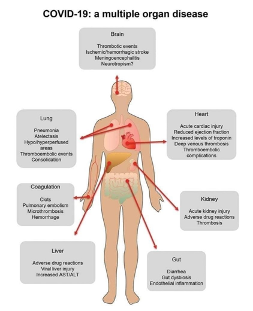HEALTH DISPARITIES OF AFRICAN AMERICANS AND OTHER RACIAL GROUPS CAN AND SHOULD BE SOLVED

Never before in my lifetime has race and racial injustice been more important. While this is not a new fact or occurrence, neither are the known health disparities of African Americans, Hispanics and other people of color. I may not have the answers to the social injustices, but I do have the answers to the health disparities supported by a preponderance of published evidence. The term “health disparities” is often defined as “a difference in which disadvantaged social groups such as the poor, racial/ethnic minorities, women and other groups who have persistently experienced social disadvantage or discrimination have caused worse health or greater health risks than more advantaged social groups”. An understanding of how race, ethnicity, geography, education, and income impact one’s access to health services can provide valuable insight to health policy experts and advocates. An analysis of the root causes of racial and ethnic disparities and what can be done to eliminate them is and should be the ultimate goal. You cannot address any problem until you recognize the why and how. The populations that have customarily been underserved in the American health care system include African Americans, Latinos, Native Americans, and Asian Americans. A 2011 study estimates that the economic costs of health disparities due to race for African Americans, Asian Americans, and Latinos from 2003 thru 2006 was a little over $229 billion. In a report issued in September, 2009, the Urban Institute calculated that the Medicare program would save $15.6 billion per year if health disparities were eliminated. The study examined a select set of preventable diseases among the Latino and African American communities, including diabetes, hypertension and stroke, and concluded that if the prevalence of such diseases in the African American and Latino communities were reduced to the same prevalence as those diseases occur in the non-Latino white population, it would save $23.9 billion in health care costs annually. As the representation of Latinos and African Americans in the general population increases, health care costs could be reduced even further by addressing racial and ethnic health disparities. Therefore, in addition to the compelling ethical and moral reasons to eliminate health disparities, there are economic reasons to do so as well.
New federal data reinforces the stark racial disparities that have appeared with COVID-19: According to the Centers for Medicare and Medicaid Services, Black Americans enrolled in Medicare were hospitalized with the disease at rates nearly four times higher than their white counterparts. Disparities were also striking among Hispanics and Asian Americans. Hispanics were more than twice as likely to be hospitalized as whites, while Asian Americans were about 50% more likely. Black and Hispanic beneficiaries were more likely to test positive for the coronavirus as well, CMS Administrator Seema Verma said.

There is a known cause of the increased risk of disease, increased severity and increased hospitalization and death among the African American population. It is the lack of production of nitric oxide. Hypertension is highly prevalent in African Americans with an association with diminished nitric oxide levels. Hypertension often leads to the development of a cardiomyopathy and heart failure. Low nitric oxide causes kidney disease, diabetes, pulmonary problems and other co-morbidities known to increase risk of COVID infection and death from COVID. The cause of insufficient nitric oxide production is partially genetic. Glucose-6-phosphate dehydrogenase (G6PD) deficiency is a genetic disorder that is most common in males and leads to insufficient nitric oxide production. About 1 in 10 African American males in the United States has it which is about twice as prevalent as other racial groups. G6PD deficiency mainly affects red blood cells, which carry oxygen from the lungs to tissues throughout the body. African Americans have a higher degree of oxidative stress from superoxide producing enzymes such as NADPH oxidase which uncouples the NO producing enzymes and further inactivates NO before it has a chance to do its job. Not only does loss of nitric oxide production increase your risk of getting sick and dying from COVID, but it also explains the lasting effects of COVID on every organ system in the body.
So, everything we have learned about COVID over the past few months and everything we have known about the health disparities over the past 3 decades reveals unequivocally that loss of nitric oxide production explains the underlying mechanism and root cause of the health disparities. We must first recognize nitric oxide as one of the causes of the health disparities and correct this condition before we can make any progress in addressing the health disparities of African Americans in our health care system. Nitric oxide is agnostic to race. We are all humans and all humans need nitric oxide in order to survive and thrive. Some just need a little more help than others.
